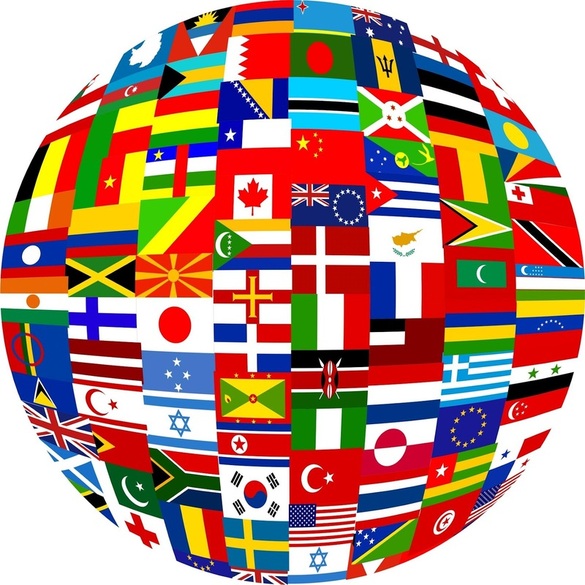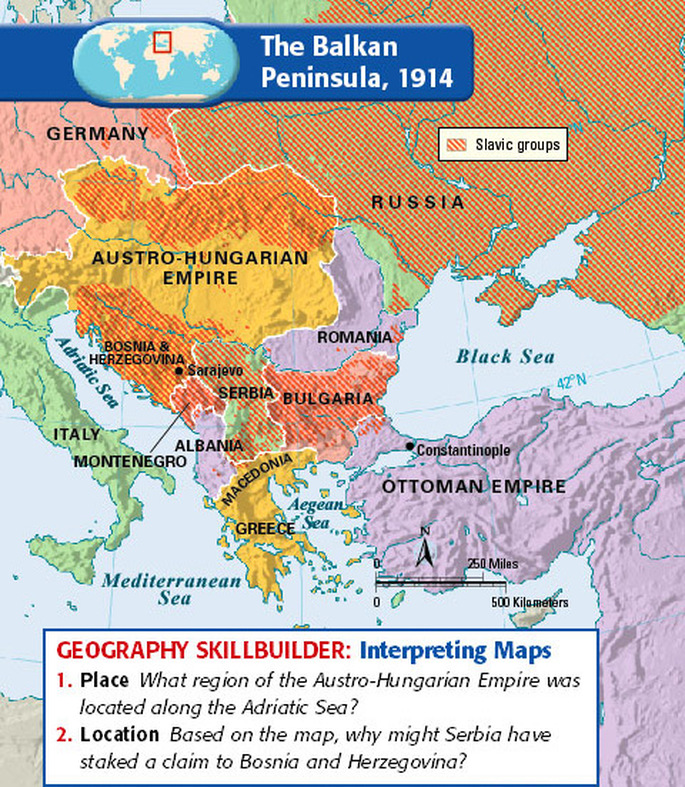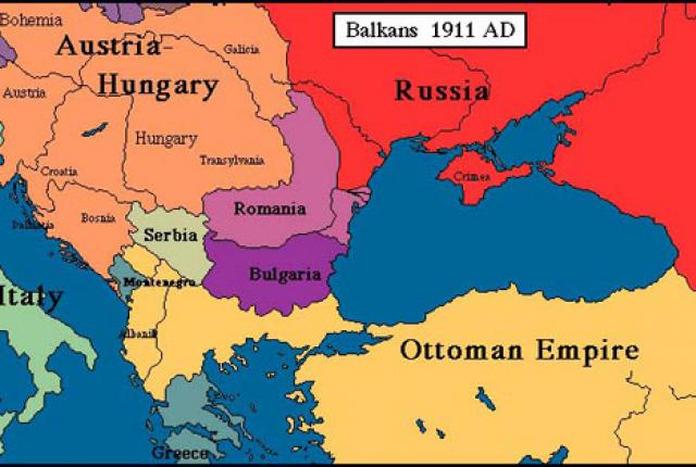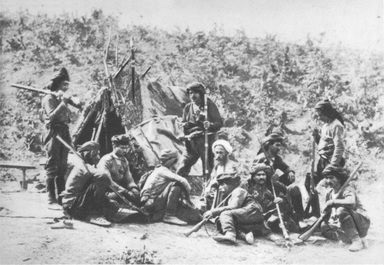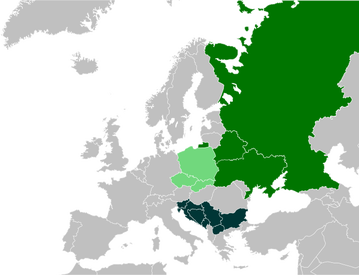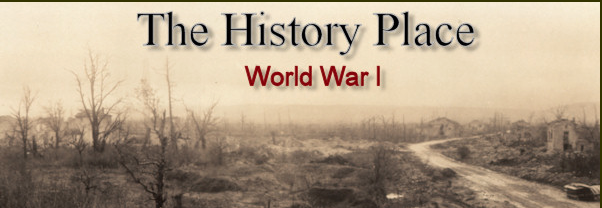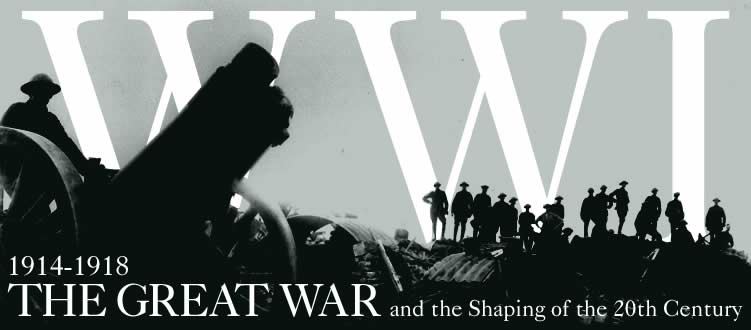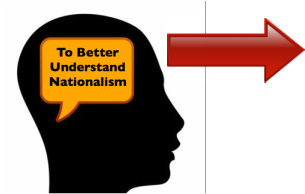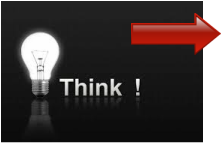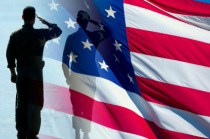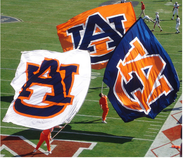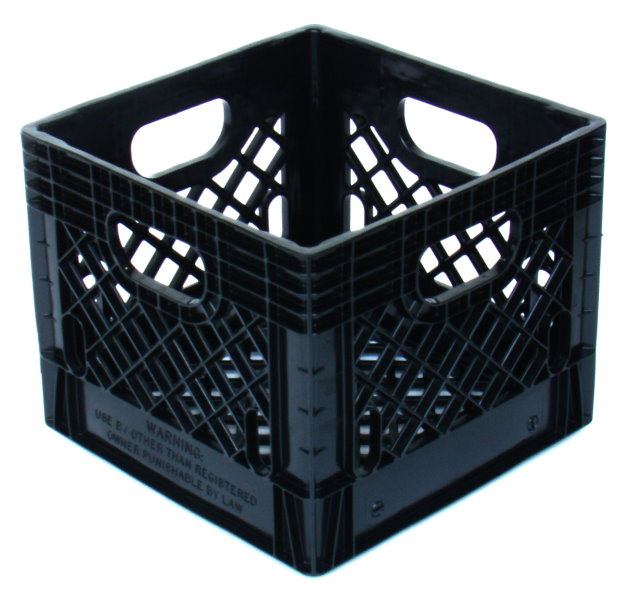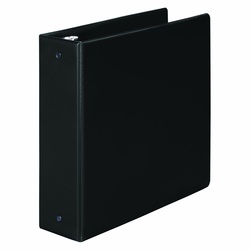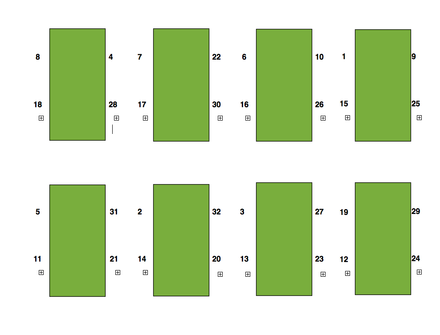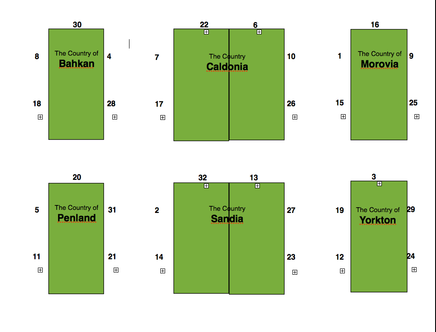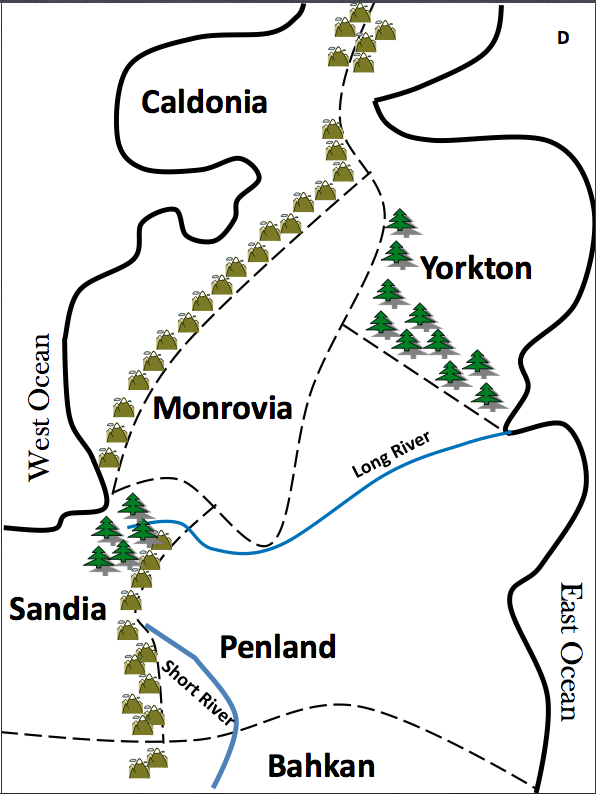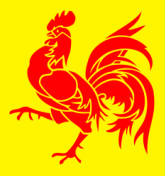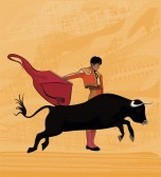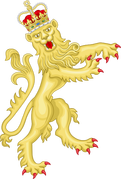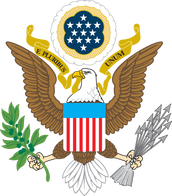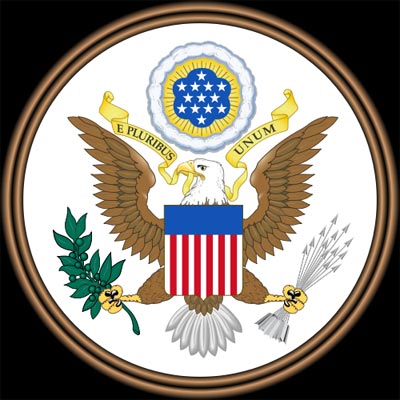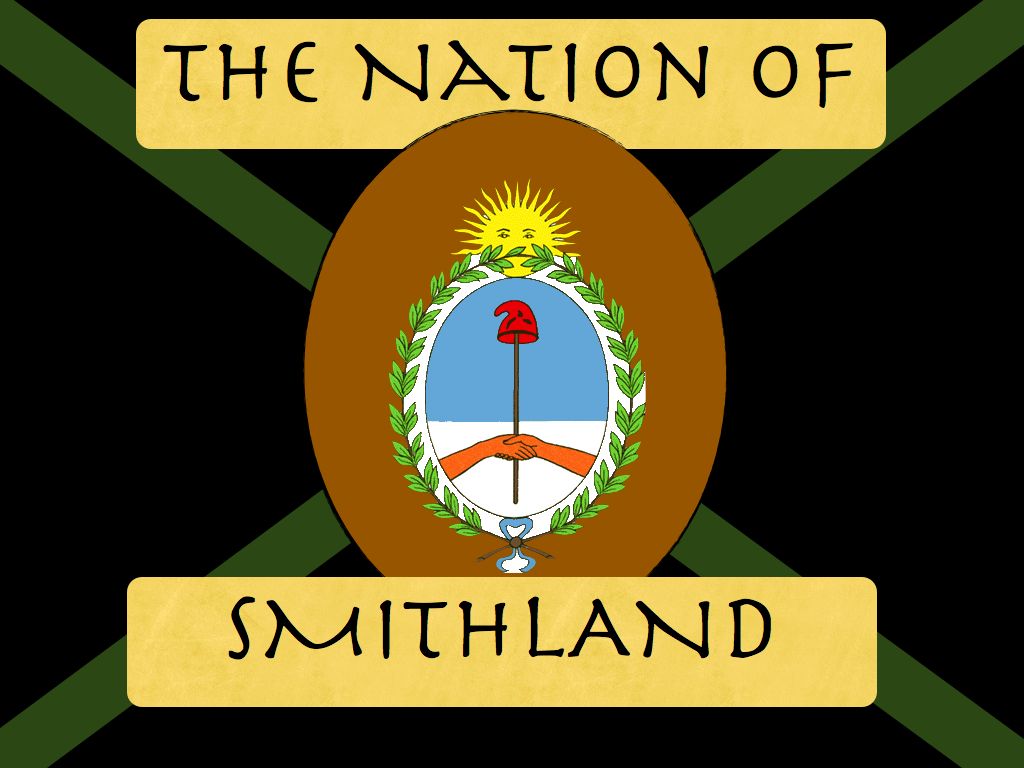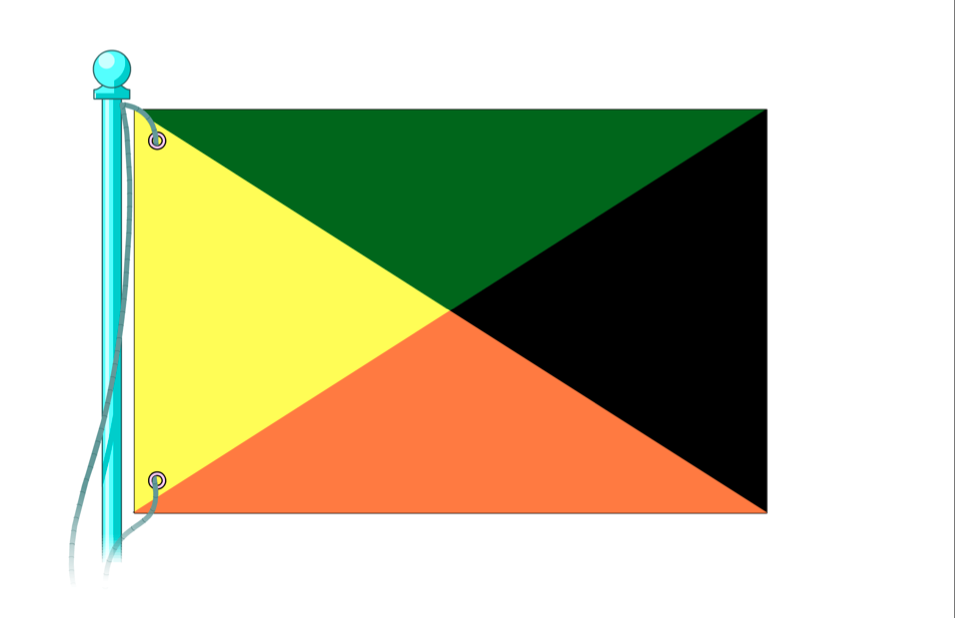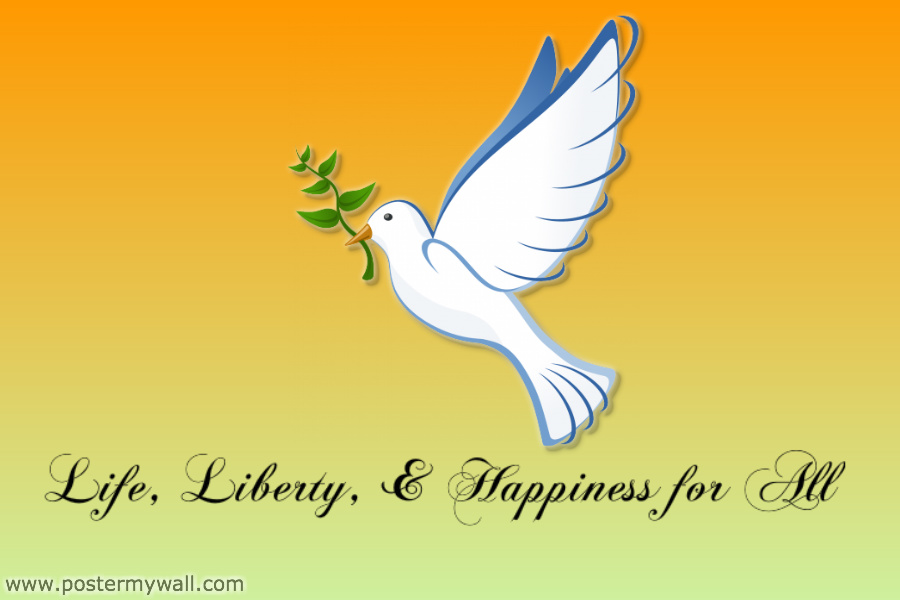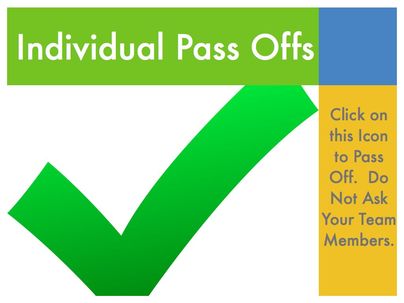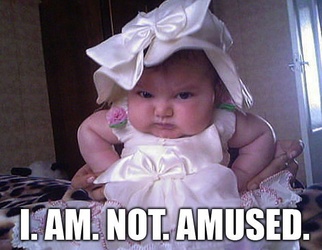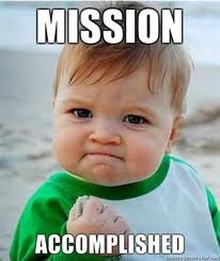Unit 6: Stars and Stripes Forever
A Unit on World War I
Topic 1: "War's A Brewin'!"
A Unit on World War I
Topic 1: "War's A Brewin'!"
Lesson Module 3
Nationalism
~ ENGAGEMENT ACTIVITY ~
Delivery of the Daily Mission & Challenges
Lesson Mission

Outcomes are what you (the student) will be able to do after the lesson is over.
I can define nationalism and how and why nationalism played a part in causing World War I.
I can explain how events in the Balkans contributed to the outbreak of World War I.
I can define nationalism and how and why nationalism played a part in causing World War I.
I can explain how events in the Balkans contributed to the outbreak of World War I.
Lesson Challenges
The lesson mission is made up of of the day's challenges. The challenges are the activities that you will complete to achieve the lesson outcomes. The challenges for this lesson are:
Challenge 1: The Focus Activity - Tackle Important Vocabulary
Challenge 2: The Teaching Activity - Hack Through the Class Reading - The Powder Keg of Europe
Challenge 3: The Small Group Activity - Battle for Understanding - Nationalism Simulation Project
Challenge 4: The Individual Activity - Prove Yourself - Quiz
Challenge 1: The Focus Activity - Tackle Important Vocabulary
Challenge 2: The Teaching Activity - Hack Through the Class Reading - The Powder Keg of Europe
Challenge 3: The Small Group Activity - Battle for Understanding - Nationalism Simulation Project
Challenge 4: The Individual Activity - Prove Yourself - Quiz
~ CHALLENGE 1 ~
Teaching Activity - Tackle Important Vocabulary
In this activity, you will listen as I explain the vocabulary words of the lesson. Then, you will type your definitions into your Lesson 3 Portfolio. Download the template below to get started. Then, save it as Lesson 3 in your World War I Portfolio on your desktop.
~ CHALLENGE 2 ~
Whole Group Activity - Hack Through the Reading
In this activity, we will take turns reading the following as a class. Then, you will answer questions about the reading in PQA format in your Desktop Portfolio for Lesson 3. You will add this into the document that you download from above in Challenge 1. Remember to save it as Lesson 3 in your World War I Portfolio on your desktop after you add Challenge 2.
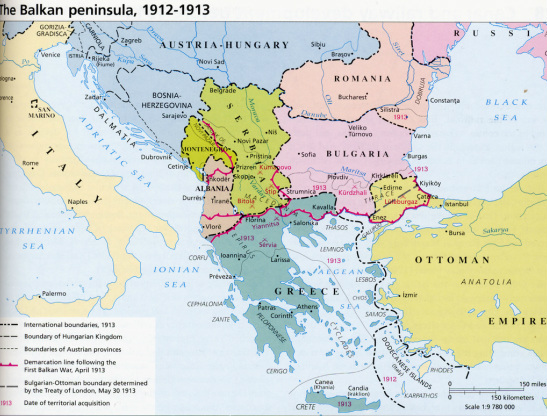
The First Balkan War breaks out between the Ottoman Empire (which controls Macedonia and Albania) and the Balkan League (Bulgaria, Serbia, Greece, and Montenegro). The Balkan League frees Macedonia and Albania from Ottoman control. They divide up Macedonia but have to give up their claim to Albania when Germany and Austria - Hungary demand they do so.
1913 The Second Balkan War
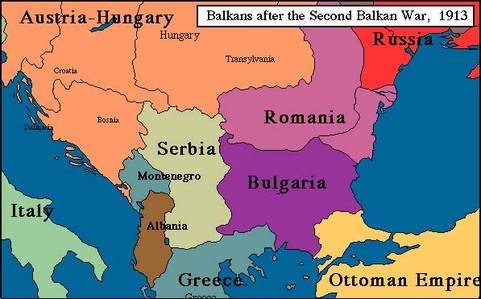
The Second Balkan War breaks out after the Balkan League falls apart. Bulgaria (who felt cheated after gaining nothing in the First Balkan War) attacks Serbia. Serbia easily defeats the Bulgarians, doubling its territory.
The Pan-Slavic Movement
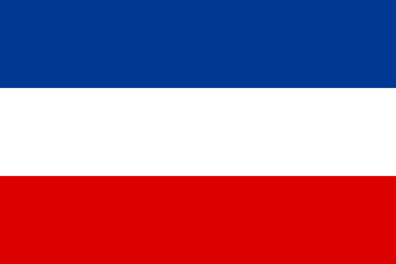 Slavic flag proposed by the Pan-Slav convention in Prague in 1848.
Slavic flag proposed by the Pan-Slav convention in Prague in 1848.
The Pan - Slavic Movement also contributed to tense circumstances in the region. Led by Serbia, the goal of this movement was to unite the southern European Slavs into one Slavic nation. The Pan - Slavic Movement was heavily supported by Russia, who felt a strong connection to the Slavs of southern Europe due to their shared culture.
Challenge 2 Questions
1.) What are the Balkan countries?
2.) What bodies of water surround the Balkan Peninsula?
3.) What was the problem in the Balkans before World War I?
4.) What was the Pan-Slavic Movement?
5.) Why were the Balkans called the "Powder Keg of Europe"?
6.) How did Nationalism play a part in the problems that were experienced in the Balkans?
7.) Look at the map below. Why might the following empires have had an interest in the Balkans?
2.) What bodies of water surround the Balkan Peninsula?
3.) What was the problem in the Balkans before World War I?
4.) What was the Pan-Slavic Movement?
5.) Why were the Balkans called the "Powder Keg of Europe"?
6.) How did Nationalism play a part in the problems that were experienced in the Balkans?
7.) Look at the map below. Why might the following empires have had an interest in the Balkans?
- The Russia Empire
- The Austria - Hungarian Empire
- The Ottoman Empire
~ CHALLENGE 3 ~
Small Group Activity - Battle for Understanding
NATIONALISM SIMULATION PROJECT
GAINING A BETTER UNDERSTANDING
Nationalism is Like School Spirit
Nationalism can be better understood by comparing it to school spirit. Citizens who are proud of their country are no different than students who are proud of their school. Armies on the battlefield win territory and prestige for their country in much the same way as boys' and girls' sports teams win victories, fame, and respect for their school. Armies have generals and teams have coaches. Both use uniforms to distinguish themselves from the opposition. Both have heroes and give awards for outstanding achievement. A country has its national anthem and a school its alma mater. While a strong believer in nationalism thinks his country is best, a student with school spirit believes their school is better than any other.
Sometimes Good Sometimes Not So Good
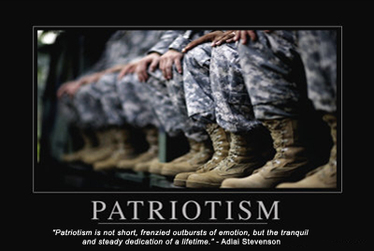
Nationalism was a strong force throughout the nineteenth and twentieth centuries (1800s and 1900s). Nationalism showed itself in different ways. In some countries, citizens united in an effort to gain a voice in their government, human rights, and even independence. On other occasions, nationalism led countries to compete for colonies and control of world trade routes. At its best, nationalism was a healthy form of patriotism but at its worst, it led to warfare and to the persecution of certain national groups by foreign countries that governed them.
Simulation Set Up
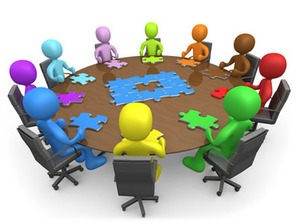
In this activity, you will pretend that you are living in the late 1800s and early 1900s. You have just become the leaders of countries in Europe. Your nation has suffered through years of poor government, hard economic times, and disastrous wars. You have decided to use nationalism to rally your discouraged people and raise the country to a level of respect, power, and leadership in world affairs.
This goal can only be reached by getting people to be proud of their country, and convincing them that they should put their country ahead of their own self - interests. You have a number of ideas in mind to achieve your objective. There are also many important decisions that you must make regarding your nations' government, armed forces, foreign trade, system of taxation, etc...
This goal can only be reached by getting people to be proud of their country, and convincing them that they should put their country ahead of their own self - interests. You have a number of ideas in mind to achieve your objective. There are also many important decisions that you must make regarding your nations' government, armed forces, foreign trade, system of taxation, etc...
Group Crates & Binders
DAY 1 - CREATE YOUR NATION
Create Your Country
STEP 1:
To begin with, you need to know who are your fellow citizens are. First, you will be reorganized into 6 groups instead of 8. the following picture is a diagram of your assignments. These are your computer numbers. They are still the same in every class. Make sure you are in the correct seat.
To begin with, you need to know who are your fellow citizens are. First, you will be reorganized into 6 groups instead of 8. the following picture is a diagram of your assignments. These are your computer numbers. They are still the same in every class. Make sure you are in the correct seat.

STEP 2:
Now that you know who the people of your country are, you need to know what country you are a part of. You will have 5 or 6 people in one group. After I have assigned your groups, please look at the following assignments:
Group 1: Your country is called Bahkan
Group 2: Your country is called Caldonia
Group 3: Your country is called Morovia
Group 4: Your country is called Penland
Group 5: Your country is called Sandia
Group 6: Your country is called Yorkton
Get out the group binder. On the Page 1 - the first title page, fill out the country name, the homeroom, and the group members' names on the title page of your group packet. Do not take these out of the binder!
Now that you know who the people of your country are, you need to know what country you are a part of. You will have 5 or 6 people in one group. After I have assigned your groups, please look at the following assignments:
Group 1: Your country is called Bahkan
Group 2: Your country is called Caldonia
Group 3: Your country is called Morovia
Group 4: Your country is called Penland
Group 5: Your country is called Sandia
Group 6: Your country is called Yorkton
Get out the group binder. On the Page 1 - the first title page, fill out the country name, the homeroom, and the group members' names on the title page of your group packet. Do not take these out of the binder!
Find Your Location
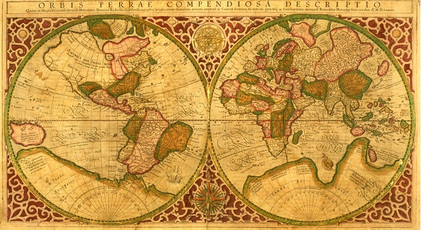
STEP 3:
All of your countries are on the Continent of Pandoria on the planet of Arison. Below is a map showing all of the countries on the Continent of Pandoria. Find your country on the map. Page 2 in your binder is a map. Color in the boundaries of your country. At the bottom, record what natural resources you have in your country. Are you on the sea? Are there forests, mountain ranges, or rivers? How might these resources be an advantage? How might they be a problem?
Your group will have 5 minutes to complete Step 3. Starting now....
All of your countries are on the Continent of Pandoria on the planet of Arison. Below is a map showing all of the countries on the Continent of Pandoria. Find your country on the map. Page 2 in your binder is a map. Color in the boundaries of your country. At the bottom, record what natural resources you have in your country. Are you on the sea? Are there forests, mountain ranges, or rivers? How might these resources be an advantage? How might they be a problem?
Your group will have 5 minutes to complete Step 3. Starting now....
Create Your Government

STEP 4:
Your first assignment is to choose your jobs in your new country. Use the Government Set Up Page (Page 3 in your binder) in Your Group binder to assign jobs. Once you decide on who will have what job, write that person's name beside the job on the Government Set Up Page. Below are the jobs are there descriptions:
You will have 5 minutes to complete Step 4. Your time starts now...
Ambassador: This person is the negotiator and will work with other countries to keep the peace by making deals that have been discussed by your country with other countries.
Scribe: This person will put into writing any proposals made to any other country.
Director of Central Intelligence: This person will be the expert on information about other countries and the threats and advantages that other countries might have on your country.
Secretary of State: This person is the speaker for the group. He or she will deliver any message or proposal from his other country to the general body (entire class) of states.
Secretary of the Defense: This person will be the expert on the country's defenses. He or she will advise the group in decision making about the country's defense and how war would be conducted or avoided.
Senator: This person will be the expert on the wants and needs of the country's people. He or she will advise the group in decision making about the country's people and how meeting their wants or needs will affect the stability of the government.
Your first assignment is to choose your jobs in your new country. Use the Government Set Up Page (Page 3 in your binder) in Your Group binder to assign jobs. Once you decide on who will have what job, write that person's name beside the job on the Government Set Up Page. Below are the jobs are there descriptions:
You will have 5 minutes to complete Step 4. Your time starts now...
Ambassador: This person is the negotiator and will work with other countries to keep the peace by making deals that have been discussed by your country with other countries.
Scribe: This person will put into writing any proposals made to any other country.
Director of Central Intelligence: This person will be the expert on information about other countries and the threats and advantages that other countries might have on your country.
Secretary of State: This person is the speaker for the group. He or she will deliver any message or proposal from his other country to the general body (entire class) of states.
Secretary of the Defense: This person will be the expert on the country's defenses. He or she will advise the group in decision making about the country's defense and how war would be conducted or avoided.
Senator: This person will be the expert on the wants and needs of the country's people. He or she will advise the group in decision making about the country's people and how meeting their wants or needs will affect the stability of the government.
Create Your National Emblem
STEP 5:
Now that you have formed your nation and have a name for it, you need to get started on promoting Nationalism in your nation. As a group, decide on your national colors and emblem. Your national colors are the colors of your flag. Obviously in America, we use red, white, and blue. Your national emblem is like your crest, your symbol, or your mascot. Many countries use animals or common symbols like stars or flowers. In America, we have the American eagle. The following are pictures of national emblems to give you some ideas. Do not use these! Form your own.
Now that you have formed your nation and have a name for it, you need to get started on promoting Nationalism in your nation. As a group, decide on your national colors and emblem. Your national colors are the colors of your flag. Obviously in America, we use red, white, and blue. Your national emblem is like your crest, your symbol, or your mascot. Many countries use animals or common symbols like stars or flowers. In America, we have the American eagle. The following are pictures of national emblems to give you some ideas. Do not use these! Form your own.
Instructions for Step 5
You have 10 minutes to design it and air drop. Your time starts now...... |
Create Your National Flag
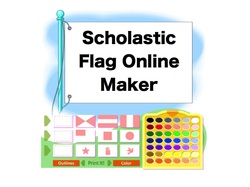
STEP 5:
You have decided on national colors and created an emblem. It is now time to design a flag for your nation. On the Scribe's computer click on the icon to the right called Scholastic Flag Maker. When you are done, select print and save as a pdf. Then, you will air drop me your flag. I'll print it out for you to display above your table and a copy for your Group Binder. I embedded an example below. The flag will be page 5 in your group binder.
You have 10 minutes to design it and air drop. Your time starts now.
You have decided on national colors and created an emblem. It is now time to design a flag for your nation. On the Scribe's computer click on the icon to the right called Scholastic Flag Maker. When you are done, select print and save as a pdf. Then, you will air drop me your flag. I'll print it out for you to display above your table and a copy for your Group Binder. I embedded an example below. The flag will be page 5 in your group binder.
You have 10 minutes to design it and air drop. Your time starts now.
Create Your National Slogan

What would be a good national slogan that people could identify with and rally behind? Some examples of slogans are:
As a group, design a flyer on the scribe's computer with your nation's new slogan by clicking on the link to your right called Poster My Wall. When you are done, select download and click on free. Download your flyer and air drop it to me.
You will have 10 minutes .....
to come up with your slogan, design it, and air drop it to me. I will print out 2 copies - one for your Group Binder and another so that we can put it up outside the room. This will go on Page 6 in your binders. I embedded an example below.
- United We Stand, Divided We Fall
- To Be the Land of the Free, We Have to Be the Home of the Brave
- Liberty, Equality, Fraternity
- All For One, And One For All
As a group, design a flyer on the scribe's computer with your nation's new slogan by clicking on the link to your right called Poster My Wall. When you are done, select download and click on free. Download your flyer and air drop it to me.
You will have 10 minutes .....
to come up with your slogan, design it, and air drop it to me. I will print out 2 copies - one for your Group Binder and another so that we can put it up outside the room. This will go on Page 6 in your binders. I embedded an example below.
Create Your Pledge of Allegiance

What would be a good pledge of allegiance for your country? Here are some examples of other countries' pledges. Do not use these. Come up with your own.
Guyana’s National Pledge to the Flag
I pledge myself to honor always the Flag of Guyana and to be loyal to my country
to be obedient to the laws of Guyana
to love my fellow citizens
and to dedicate my energies
towards the happiness and prosperity of Guyana.
Indian Pledge of Allegiance
I pledge allegiance to my Tribe,
To the democratic principles of the Republic
And to the individual freedoms
Borrowed from the Iroquois and Choctaw Confederacies
As incorporated in the United States Constitution
So that my forefathers shall not have died in vain.
Philippines Oath of a Patriot
I love the Philippines.
This is the land of my birth.
This is the home of my race.
By her (the land) I am watched and helped
To become strong, happy, and productive.
In return, I will listen to the counsel of my parents,
I will obey the regulations of my school,
I will fulfill the responsibilities of a patriotic citizen, obedient to the law,
I will serve my country without selfishness and with complete integrity,
I will try to be a true Filipino
In thought, in word, and in deed.
As a group, write a pledge on the scribe's computer by creating a Pages document. When you are done, air drop it to me.
You will have 10 minutes to...... come up with your pledge and air drop it to me. Again, I will print out two copies for you - one for your Group Binder (it will be Page 7) and the other to be put up outside the room.
Guyana’s National Pledge to the Flag
I pledge myself to honor always the Flag of Guyana and to be loyal to my country
to be obedient to the laws of Guyana
to love my fellow citizens
and to dedicate my energies
towards the happiness and prosperity of Guyana.
Indian Pledge of Allegiance
I pledge allegiance to my Tribe,
To the democratic principles of the Republic
And to the individual freedoms
Borrowed from the Iroquois and Choctaw Confederacies
As incorporated in the United States Constitution
So that my forefathers shall not have died in vain.
Philippines Oath of a Patriot
I love the Philippines.
This is the land of my birth.
This is the home of my race.
By her (the land) I am watched and helped
To become strong, happy, and productive.
In return, I will listen to the counsel of my parents,
I will obey the regulations of my school,
I will fulfill the responsibilities of a patriotic citizen, obedient to the law,
I will serve my country without selfishness and with complete integrity,
I will try to be a true Filipino
In thought, in word, and in deed.
As a group, write a pledge on the scribe's computer by creating a Pages document. When you are done, air drop it to me.
You will have 10 minutes to...... come up with your pledge and air drop it to me. Again, I will print out two copies for you - one for your Group Binder (it will be Page 7) and the other to be put up outside the room.
DAY 2 - CREATE YOUR WORLD
Step 1 - Confidential Packets

I am giving each Minister of State a packet of confidential data. Please distribute the confidential data to each group member and quietly review the information. Don’t let any other group here your discussion. Groups are to analyze your nations position. At the end of class, these will go in the front pocket of your group binder!
(You will have 15 minutes starting now...)
(You will have 15 minutes starting now...)
Step 2 - A News Bulletin
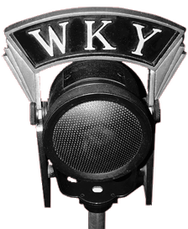
To: Ministers of State
From: United Press International
DATELINE: Bahkan
The government of Bahkan has reported that Penland nationalists have staged a massive armed attack along her boarders. They have taken control of the East River and have bombed government facilities in the capitol.
It is believed that the raiders are members of the same group which have been staging smaller raids on the Bahkan border in previous months.
This action is by far the most serious yet taken by Penland sympathizers. Bahkan officials charge that this attack was led by the regular Penlandian Army, and is an act of outright aggression against Bahkan territorial integrity.
Governmental representatives Penland have refused to comment on the current crisis. This leads to speculation that Bahkan officials are making a legitimate charge.
There are also reports that there have been massive troops movements in Penland, both in the direction of Sandia and Yorkton.
From: United Press International
DATELINE: Bahkan
The government of Bahkan has reported that Penland nationalists have staged a massive armed attack along her boarders. They have taken control of the East River and have bombed government facilities in the capitol.
It is believed that the raiders are members of the same group which have been staging smaller raids on the Bahkan border in previous months.
This action is by far the most serious yet taken by Penland sympathizers. Bahkan officials charge that this attack was led by the regular Penlandian Army, and is an act of outright aggression against Bahkan territorial integrity.
Governmental representatives Penland have refused to comment on the current crisis. This leads to speculation that Bahkan officials are making a legitimate charge.
There are also reports that there have been massive troops movements in Penland, both in the direction of Sandia and Yorkton.
Step 3 - State Meetings
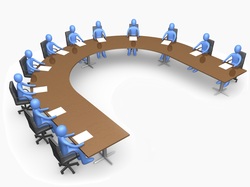
Now, all of the Ministers of State please meet with your nation and prepare a state paper, proposing a solution to the current world crisis. Do not consult other nations. Use what you heard in the newsletter and the confidential information packet to devise a solution. Use Page 8 in your group binder.
You have 20 minutes starting now!
You have 20 minutes starting now!
DAY 3 - PEACE ACCORDS
Step 4 - Peace Proposals

The Minister of State from each nation will now stand and read aloud their position paper to the class. Deputy Ministers (all other group members) need to take detailed notes on what other nations plan to do.
Each group will have 5 minutes.
Each group will have 5 minutes.
Step 5 - State Meetings

After each Minister has made his/her proposal each nation will now meet to review the various suggestions. These should be analyzed in in light of your groups own objectives. Decide on what negotiations you want to make with other countries. Prepare your negotiation proposal on Page 9 of the group binder. If you need to send other ministers out as ambassadors, they will all need to fill out a form. I have included three in your binder but you are welcome to ask for more.
You have 10 minutes......
You have 10 minutes......
Step 6 - Negotiations
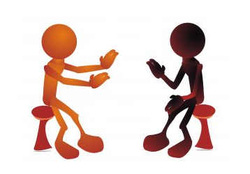
Ministers, You will now have 10 minutes to send ambassadors to any nation to negotiate, compromise, etc.
Step 7 - State Debriefings and Analysis

Please have all ambassadors return to their groups. Your group must now determine what your ultimate action will be. Ministers of State need to prepare the 2nd State Paper giving their reasons for your decision and real possible alternatives would include; declaration of war, an ultimatum, announcement of support or no support, etc. This will be on Page 10 in your group binder.
You have 10 minutes.....
You have 10 minutes.....
Step 8 - National Declarations

The Ministers of States will now read aloud their second state paper to the class.
Each group will have 5 minutes.
Each group will have 5 minutes.
DAY 4 - CONNECTIONS
Making a Connection
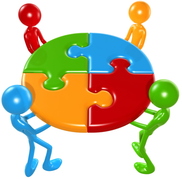
Each one of your pretend nations represented a real nation in World War I. Do you know which real nation your group represented in the simulation? This will not be revealed until the end of the simulation - just incase you bozos are reading ahead!
Click on the picture to the right for the Lesson Conclusion.
Click on the picture to the right for the Lesson Conclusion.
~ CHALLENGE 4 ~
Individual Activity - Prove Yourself
In this activity, you will answer the questions in a short quiz to prove that you have accomplished the Lesson 3 Mission. You may take this quiz as many times as you like. Click on the icon below to take the quiz. Try not to use your notes.
~ MISSION ACCOMPLISHED ~
Lesson 3: Nationalism Challenge Checklist
Challenges for Topic 1 Lesson 3
- Did you complete and save Challenge 1: The Focus Activity - Tackle Vocabulary in your Lesson 3 Desktop Portfolio?
- Did you complete and save Challenge 2: The Teaching Activity - Hack through the Class Reading Questions "The Powder Keg of Europe" in your Lesson 3 Desktop Portfolio?
- Did you complete and save Challenge 3: The Small Group Activity - Battle For Knowledge Nationalism Simulation in your Lesson 3 Desktop Portfolio and turn in all hard copies?
- Did you complete and save Challenge 4: The Individual Activity - Prove Yourself Quiz Questions online and submit?
